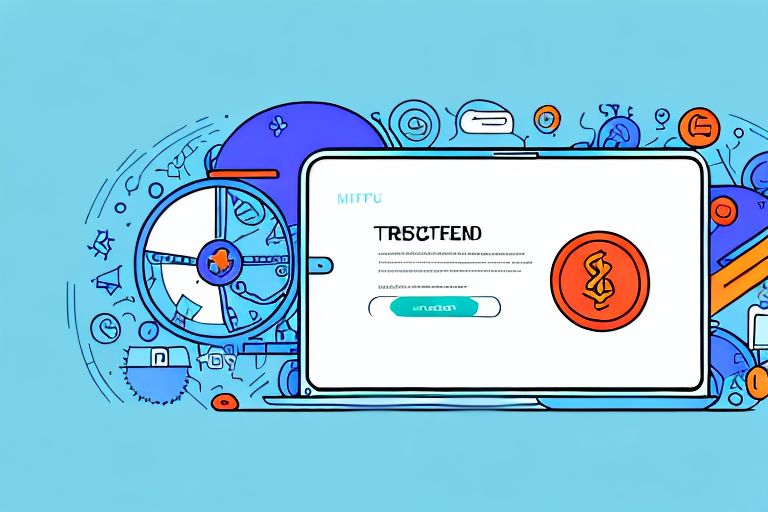Exploring the Benefits of Refund Technology
As businesses strive to improve their customer satisfaction ratings, one area that has become increasingly important is their refund policy. With the advancement of refund technology, companies have been able to streamline their refund processes, resulting in a better customer experience and improved bottom line. In this article, we'll explore the many benefits of refund technology and how it can help your business grow and succeed.
What is Refund Technology and How Does it Work?
Refund technology is a set of tools and systems that enable businesses to automate and optimize their refund processes. Essentially, it allows a business to handle refunds more efficiently by reducing manual work and streamlining the process for both the customer and the company.
Integration with Business Systems
The technology is typically integrated into the company's e-commerce platform, point of sale system, or accounting software. When a customer initiates a refund request, the technology handles the transaction, verifies the refund, and initiates the payment to the customer's account—all within minutes. This efficiency frees up customer service personnel to handle more complex queries.
Fraud Detection and Prevention
One of the key benefits of refund technology is its ability to reduce fraudulent refund requests. Advanced algorithms detect patterns and anomalies in refund requests, helping identify potential fraud. According to a Forbes report, businesses can reduce fraud-related costs by up to 30% through effective refund technology implementation.
The History and Evolution of Refund Technology
The history of refund technology dates back to the 1990s when companies began offering electronic refunds via credit card payments. However, it wasn't until the early 2000s that online payment gateways started providing automated refund processing services.
Integration with Modern Systems
Over time, more sophisticated refund technology solutions were developed and integrated with businesses' existing systems. Today, companies have options ranging from basic refund processing to more complex systems that include real-time data analytics and customer feedback analysis tools.
Security Enhancements
Security remains a top priority in refund technology. Many companies now implement multi-factor authentication and other security measures to protect against fraudulent refund requests, ensuring the integrity of the refund process.
The Top Advantages of Using Refund Technology for Businesses
Implementing refund technology offers numerous advantages for businesses, including:
- Increased efficiency and reduced workload for employees
- Improved customer satisfaction ratings
- Optimized refund policies and processes
- Increased revenue and customer retention
- Reduced errors and risk of fraud
Data-Driven Decision Making
Another advantage is the ability to track and analyze refund data. Businesses can access insights such as reasons for refunds, frequency, and commonly refunded products or services. This data can identify areas for improvement, leading to enhanced product quality and customer service.
How Refund Technology Can Improve the Customer Experience
Refund technology provides a seamless and hassle-free refund process, enhancing the overall customer experience. Automated systems ensure shorter wait times, faster refunds, and fewer errors, leading to higher customer satisfaction ratings.
Automated Updates
Customers receive automated updates on their refund status, reducing the need to contact customer service for information. This transparency fosters trust and encourages repeat business.
Operational Efficiency
By streamlining the refund process, businesses save time and money. Automated systems reduce the need for manual processing and paperwork, allowing staff to focus on other critical tasks, thereby increasing overall efficiency and productivity.
Streamlining Operations with Refund Technology
Automating the refund process allows companies to streamline their operations and reduce the workload for employees. Refund technology systems handle refunds swiftly, enabling customer service personnel to address more complex issues and provide personalized service.
Cost Savings
Companies can significantly save on operational costs by minimizing manual refund processing and reducing the risk of human error. This leads to increased efficiency and profitability.
Data Analysis for Operational Improvement
Tracking and analyzing refund data helps companies identify patterns in customer behavior, such as frequent reasons for refunds or commonly returned products. This information is invaluable for improving product quality, enhancing customer service, and optimizing business operations.
Maximizing Savings with Refund Technology
Refund technology helps businesses save money in several ways:
- Accelerated refund processing times reduce the average cost of handling refunds.
- Fraud detection capabilities decrease the rate of fraudulent refunds, saving companies from unnecessary payouts.
- Insights from refund data help identify areas for product or service improvement, reducing the overall number of refunds.
Enhanced Customer Service
Improving the refund process enhances customer service, boosting the company’s reputation and fostering customer loyalty. Real-time updates on refund statuses minimize customer frustration and enhance satisfaction.
Understanding the Different Types of Refund Technology Available Today
Several refund technology solutions are available, each offering unique benefits. Popular systems include automated refund processing, real-time data analytics, and customer feedback analysis tools. Businesses can choose one or a combination of these options based on their specific needs.
Automated Refund Processing
This technology automates the entire refund process, minimizing manual intervention and speeding up refund times. Benefits include increased customer satisfaction and improved business efficiency.
Real-Time Data Analytics
Real-time data analytics allow businesses to track and analyze customer behavior as it happens, providing valuable insights into how customers interact with their business. These insights enable informed decisions to enhance the refund process and overall customer experience.
Comparing Refund Technology Solutions: Pros and Cons
When selecting a refund technology solution, it's essential to weigh the pros and cons of each option:
- Automated Refund Processing: Offers faster processing times and lower operational costs but may lack advanced features.
- Real-Time Data Analytics: Provides valuable insights into sales trends and customer behavior but can be more complex to implement.
The choice should align with your business goals and needs.
Customer Support Considerations
Evaluate the level of customer support provided by the solution. Some providers offer 24/7 support, while others operate during business hours only. Reliable and responsive support is crucial for addressing issues promptly.
Choosing the Right Refund Technology for Your Business Needs
Selecting the appropriate refund technology involves considering several factors:
- Integration: Ensure the solution integrates seamlessly with your current systems.
- Features: Choose features that align with your business goals.
- Customer Support: Opt for providers that offer robust customer support and training resources.
- Security: Verify that the provider has a strong track record in protecting sensitive customer information.
Tips for Implementing Refund Technology Successfully in Your Business
Successful implementation of refund technology requires careful planning and execution. Here are some tips:
- Invest in thorough training for employees to ensure they understand how to use the system effectively.
- Engage with customers to gather feedback and optimize the system based on their experiences.
- Regularly review and update protocols and processes to keep the system running smoothly.
User-Friendly Systems
Ensure that the refund technology is user-friendly for both employees and customers. Conduct user testing and gather feedback before and after implementation to identify and address any usability issues.
Clear Communication
Develop a clear communication plan to inform customers about the new refund process and any changes to existing policies. Transparency helps build trust and ensures a smooth transition.
Overcoming Common Challenges in Implementing Refund Technology
Implementing refund technology can present challenges such as employee resistance and integration difficulties with existing software. However, these challenges can be overcome with careful planning and effective communication.
Employee Training and Engagement
Provide comprehensive training to employees and involve them in the implementation process to reduce resistance and ensure a smooth transition.
Seamless Integration
Work closely with technology providers to ensure that the refund technology integrates seamlessly with your existing systems, minimizing disruptions to operations.
Case Studies: Real-Life Examples of Businesses Benefiting from Refund Technology
Several prominent businesses have successfully implemented refund technology to enhance their operations:
Amazon
Amazon offers a highly streamlined refund process, with many customers receiving their refunds within 24 hours of initiating the request. The company uses automated refund processing to ensure efficiency and consistently exceeds customer expectations.
Walmart
Walmart utilizes refund technology to analyze customer behavior and optimize their sales and marketing strategies. By analyzing customer feedback, Walmart makes informed business decisions that increase revenue streams.
Nordstrom
Nordstrom employs refund technology to provide exceptional customer service, ensuring that refund processes are quick and hassle-free, thereby maintaining high customer loyalty.
Future Trends and Innovations in the Field of Refund Technology
As technology continues to advance, the field of refund technology is expected to evolve with several emerging trends:
- Increased integration with artificial intelligence and machine learning to enhance automation and fraud detection.
- More personalized customer service and communication through advanced CRM integrations.
- Enhanced security and fraud prevention measures to protect against sophisticated threats.
Artificial Intelligence and Machine Learning
AI and ML algorithms are becoming integral to refund technology, enabling more accurate predictions and automated decision-making processes. According to a McKinsey report, businesses leveraging AI in their refund processes can achieve up to a 40% increase in efficiency.
Personalized Customer Experiences
Future refund technology will focus more on personalized customer experiences, using data analytics to tailor refund processes to individual customer preferences and behaviors.
Enhanced Security Measures
With the rise of cyber threats, refund technology will incorporate more robust security measures, including advanced encryption and biometric authentication, to safeguard sensitive information.
Overall, refund technology is an essential tool for businesses looking to improve their refund processes and provide their customers with a better experience. By choosing the right solution and implementing it carefully, businesses can streamline their operations, save money, and grow their bottom line.






















